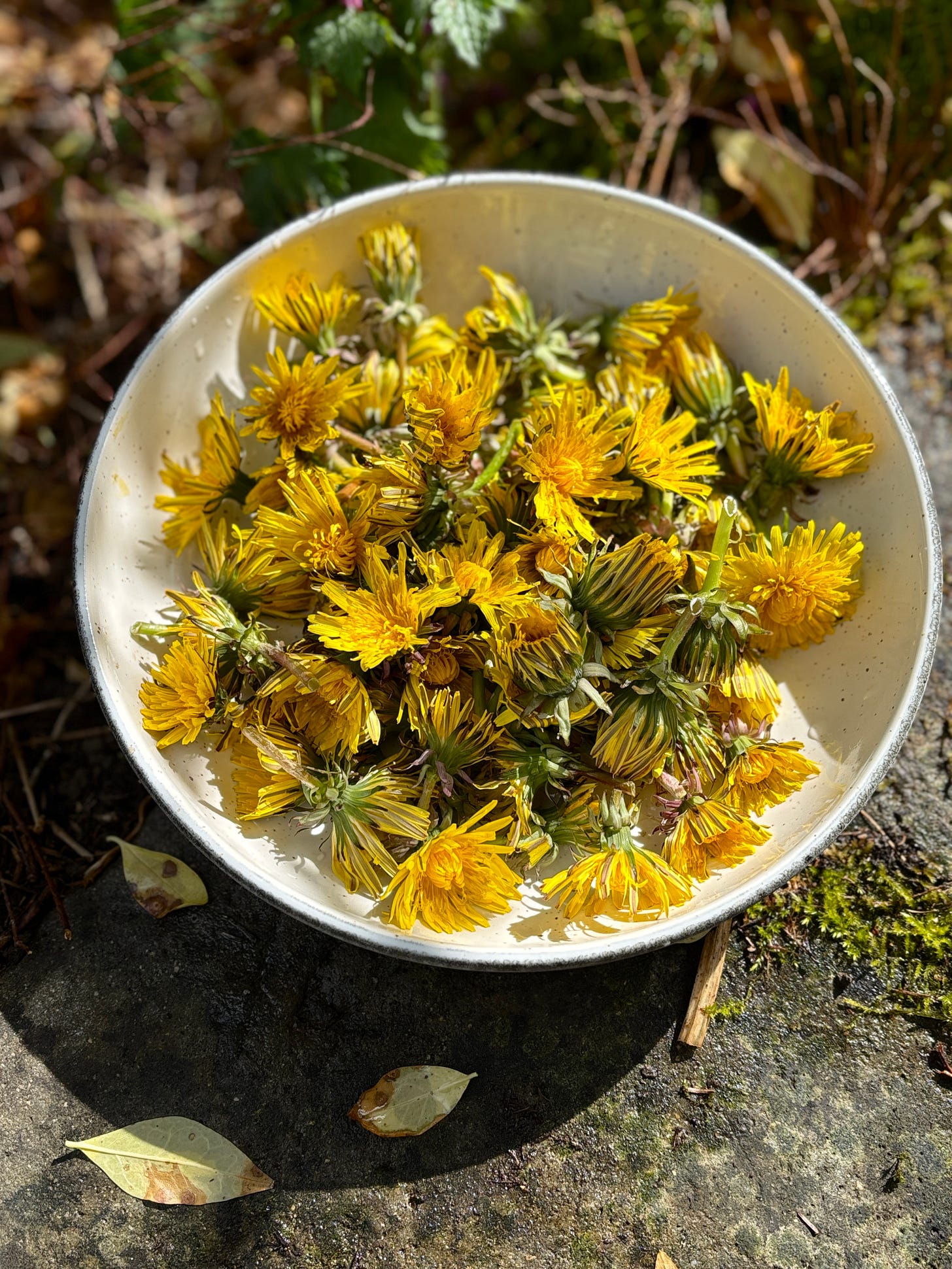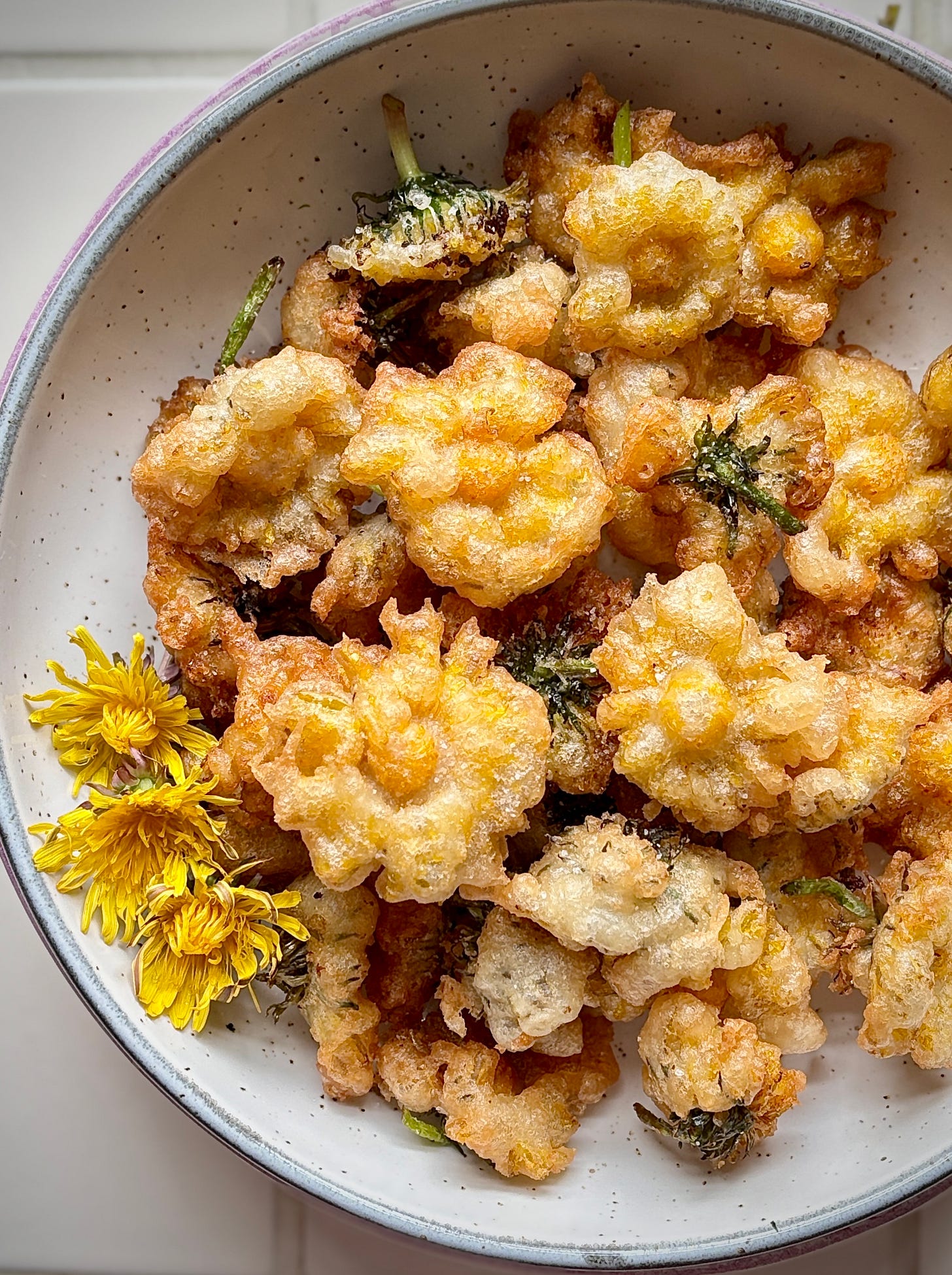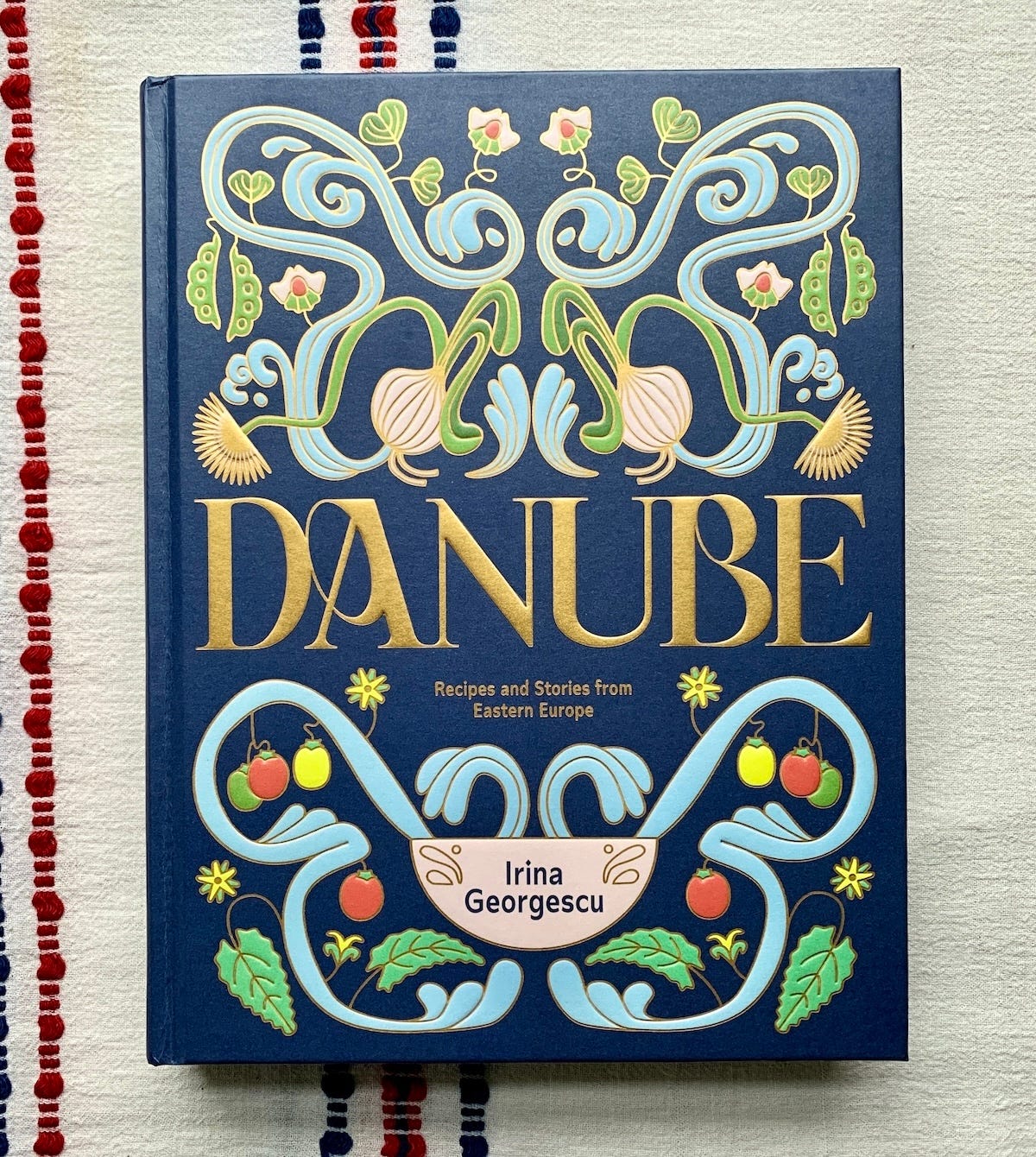Welcome to Recipes and Stories from Eastern Europe. I'm Irina Georgescu, a James Beard award-winning author specialising in Eastern European cuisine. My newsletter offers free recipes and travel inspiration from this part of Europe, including Romania and Transylvania, where I’m from. You can support this free publication by purchasing my books, available in bookstores and online worldwide: 'Carpathia', 'Tava' and 'Danube'* Thank you.
There's still plenty of time to really enjoy the amazing benefits that spring plants have to offer. Depending on your location, you can still pick some delicious nettles, and I recommend checking out this post about how to cook them. While dock leaves might have grown a bit large, dandelions and wild garlic are still good to pick and are found in many traditional recipes.
Before we dive into the golden sea of dandelions, I’d like to share a few thoughts on how to forage and pick wild foods, especially wild garlic. I see people pulling them from the ground, roots and all, triumphantly. However, how we care for wild plants will show in next year’s harvest. Be mindful: don’t pull the roots or collect flowers from young plants, as they are still developing for next year. Select from vigorous patches that need ‘thinning’ and don’t harvest what you can’t prepare at home. What often seems like a handful of leaves in the woodland will turn out to be a large quantity at home, and cleaning and preparing them takes some time.
Dandelions, however, are quite different. They grow, spread, and create those globe-like seedheads that disperse away effortlessly in the air. Did you know they can travel up to 100km just by riding on the wind? That’s remarkable, and also the reason why they have attracted a curious nickname in Romanian: ‘pig’s fart’, possibly reflecting this persistence. But let’s not get sidetracked by this wicked sense of humour. It’s too pretty a flower to disgrace.
Dandelions, officially called păpădie in Romanian, bring a lot of colour to the garden and are a great source of food for bees and insects. And for humans. Therefore, I don’t mow the grass, hoping the plants will flourish in greater numbers the following year, which also means I can use more in my salads and other dishes.
In Romania, there's a superstition that suggests making a wish and blowing the seeds as far away as you can, letting the wind carry them to the four corners of the earth.
A common use of dandelion is to make a tea. We serve it without milk, often after a copious meal, because it helps with digestion and detoxifies the liver. Think of it as the Spring doctor.
In the countryside, people used to make flatbreads called azimă and mix chopped dandelions into the dough. It sounds interesting now, but in the past, the flour they used was of poor quality, so the dandelions were added to enhance the flavour and aid digestion.
My grandmother, on my father’s side, lived in a small house in southern Romania, a kind of traditional cob house with two rooms and a cellar that seemed suited for a village museum. Even though she wasn’t too far from us in Bucharest, the distance meant we couldn't visit her every day, so Dad found someone to help my grandmother with the work in the garden or around the house. The helper was Tanti Maria (Auntie or Tante Marie) from a nearby Romany village, where families had been forced to settle decades earlier by the Communist regime. They were prohibited from working in cities, owning land, or practising religion, relegating them to poverty as their traditional crafts, such as making cauldrons, spoons, bricks, and jewellery, were also banned. Every autumn, people from my grandmother’s village donated clothing, blankets, mattresses, and even windows to help the Romany survive the winter. In the summer, the Romany unofficially worked in the fields or for local households to make a living. Tanti Maria helped my grandmother and other elderly women in the village, even though she was old herself and crippled by a lifetime of hard work. Each working day concluded with a cup of coffee on a small garden bench, where my grandmother and Tanti Maria enjoyed taking turns playing card solitaire. We refer to this game as ‘pasențe’ in Romanian (which translates to ‘patience’ in English) and it was a form of fortune-telling. They had some important answers to find, like who was going to marry next in the village, or die, or have children.
Along with money, we used to give Tanti Maria cooked meals and raw ingredients like potatoes and cornmeal to take home, but she always sought permission to gather some ‘buruieni’- weeds from the garden- to use in a salad, as she would say. I don’t remember being intrigued by it. I think we trusted her ancestral knowledge of wild plants, so my sister and I helped her pick anything she wanted, such as wild garlic, wild fennel, and borage…and more. Dandelions were especially valued, possibly also because she liked to make dandelion wine or use the flowers to dye fabric.
In her memory and thinking back at how I imagined her preparing those wild plants, I make this potato salad. I know it’s a salad we actually eat in Romania when dandelions are in season, but I never made it quite like this.
It’s a paradox, because when I think of foraging, I think of freedom, yet this is exactly what Tanti Maria and her family didn’t have. Forced to ‘settle’, banned from their nomadic life, cast away by society, with no access to education, and in many cases, no access to religion either, freedom was not the word to define them. Instead, what they had was an unwavering connection to traditional knowledge and to self-reliance.
Romany Potato Salad with Dandelions: no recipe
Boil potatoes, then gather a handful of dandelion flowers and leaves (young leaves if possible, because they are less bitter) and a handful of wild garlic, and any fennel and borage. Wash the leaves and flowers well, dry them on a paper towel and chop finely. Make a vinaigrette following the ratio of one part vinegar and three parts oil, 1/2 teaspoon of salt. Depending on how many potatoes you have boiled or plants you have, you might like to double or triple the quantity. Mix the vinaigrette with the chopped plants and then pour over the potatoes. Taste and adjust the saltiness, as potatoes are always tastier when they are salty. Enjoy.
Dandelion flower fritters
If we know about the famous elderflower fritters, acacia flower fritters, and even sage fritters, then today it’s all about dandelion flower fritters. On the basis that everything is better deep-fried, I bring you a recipe inspired by Elisabeth Luard's post, where she wrote: ‘The flavour of the flowers is delicately honeyed - good reason to sprinkle the petals over a salad, or use them to flavour and colour a jelly. Or fritter the whole flowerheads as a dessert – gorgeous with honey and cream.’ Oh yes, I said, since I had all the ingredients to hand, sauf the cream.
The recipe
Ingredients:
80g self raising flour
20g caster sugar
240ml sparkling water or cider (or beer, or half water half beer)
Dandelion flowers, as many as you would like to eat
Oil for frying
Honey to drizzle
Method:
Make sure the dandelion flowers are free of insects and in good condition. Avoid washing them, as they will go limp. Combine all the ingredients for the batter and refrigerate for 30 minutes. Use a small, deep pan to heat enough oil for the dandelions to be immersed. If you have a thermometer, the oil should reach 170°C-180°C. If not, the oil needs to sizzle vigorously when you dip a ‘test flower’. Dip a flower in the batter, then place it in the oil and fry for 1 minute, until golden. Work in small batches to avoid overcrowding the pan.
I like to place them in a sieve over a bowl to get rid of the excess oil, then move them onto a plate and drizzle with honey. Eat immediately while they are crisp.
Inspiration from the book ‘Danube, Recipes and Stories from Eastern Europe’: SPRUCE BUD CORDIAL
In Romania, a popular cordial is made from pine or spruce buds collected in late spring. The bright green branch tips are rich in vitamin C, making them ideal for not only cordials but also for pickling, vinegar infusions, and crafting infused alcoholic beverages. Where I live in Wales, May and June are the months when you find the buds. In Romania, it starts in April, depending on the weather. Recipe in Danube*.
* The book is available anywhere in the world, just google it so you can get the nearest option to you and the best value for money. In the UK: Waterstones, Bookshop.org, Hive, and Amazon. In the U.S.: Barnes and Noble, Omnivore Books, Kitchen Arts and Letters, Book Larder, and Amazon. In Canada: Indigo. In Australia: Booktopia. In Romania: Librăriile Cărturești.










I was just collecting dandelion leaves to add into my breakfast salad this morning! What a wonderful coincidence to see your post today. 😊
Thank you for sharing the lovely recipes, family stories and cultural insight with us!
The dandelion breads use chopped leaves? Or also the flowers?